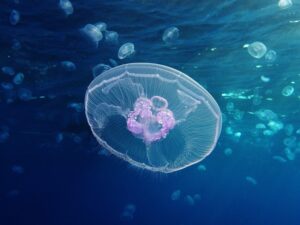With their unique and bizarre appearances, the moonfish, wobbegong shark, anglerfish, stargazer, red-lipped batfish, blob fish, and goblin shark are known as some of the Strangest Fish in the World. Join KnowAllAnimals to explore the details of these uniquely shaped fish in the following article.
1. Top 11 Strangest Fish in the World You Won’t Believe Exist
Explore the mysterious world of the ocean with the Strangest Fish in the World: From the waterfall-climbing cavefish and the three-legged fish that stands motionless like a coral, to the prehistoric-looking goblin shark. Each species tells a wonderful story of diverse evolution and superior survival skills in nature. Here are some of them:
1.1. Waterfall Climbing Cavefish
The Waterfall Climbing Cavefish (Cryptotora thamicola) is a ray-finned fish that lives deep within caves in Thailand. For this reason, it’s also called the cavefish. Its eyes are completely atrophied. However, what makes Cryptotora thamicola so unique is that it particularly thrives in strong currents and can even climb vertical waterfalls. It uses its four fins to cling to slick rock surfaces to avoid being swept away by the water. They can even climb up the rock walls behind waterfalls.
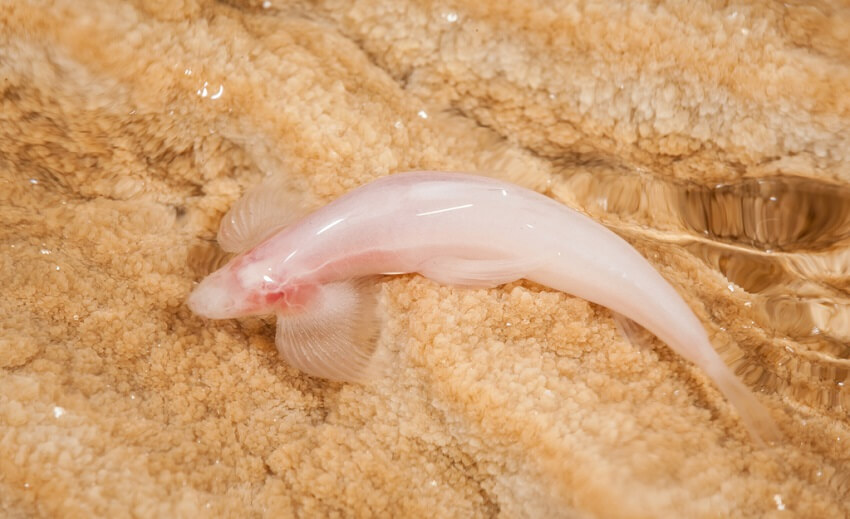
1.2. Tripod Fish
The Tripod Fish is one of the few motionless animal species. Like coral, sponges, sea anemones, and other marine organisms, it remains stationary, waiting for plankton to drift by so it can attack. Its three fins are very thin and elongated, helping it stay in one place in the deep ocean. The tripod fish only moves when absolutely necessary. It uses its two front fins to catch and guide food into its mouth.
Because it doesn’t need to chase prey, the tripod fish’s eyes are almost completely blind. Additionally, they are hermaphroditic, so they don’t live in groups or frequently encounter other members of their species.
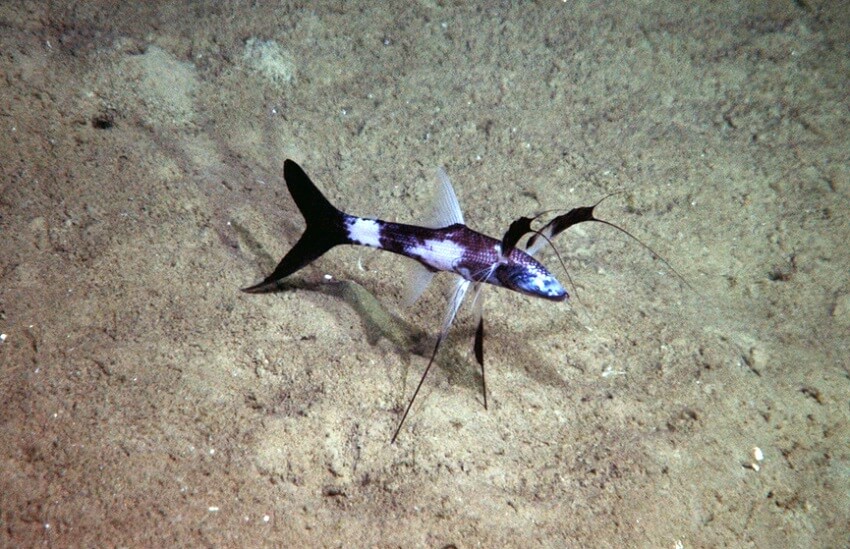
1.3. Stargazer
The Stargazer (Pleuroscopus pseudodorsalis) is a fish that typically lives at depths of 40-800 meters (130-2,600 feet) on the seabed and can grow from 18 to 90 cm (7 to 35 inches) in length. With its jagged, sharp teeth and vicious-looking eyes, the stargazer is also considered one of the ugliest fish in the world.
As a master ambush predator, its upturned face allows the stargazer to bury its entire body in the sand or mud, waiting for prey to swim by. When it opens its mouth, the stargazer can become a “killing pit,” capable of swallowing prey of a similar size whole. Some stargazer species can even lure prey with a long tongue. A few others have a pair of highly venomous spines behind their heads or an electric organ between their eyes. These are weapons that help them paralyze small prey or inflict pain on larger animals.
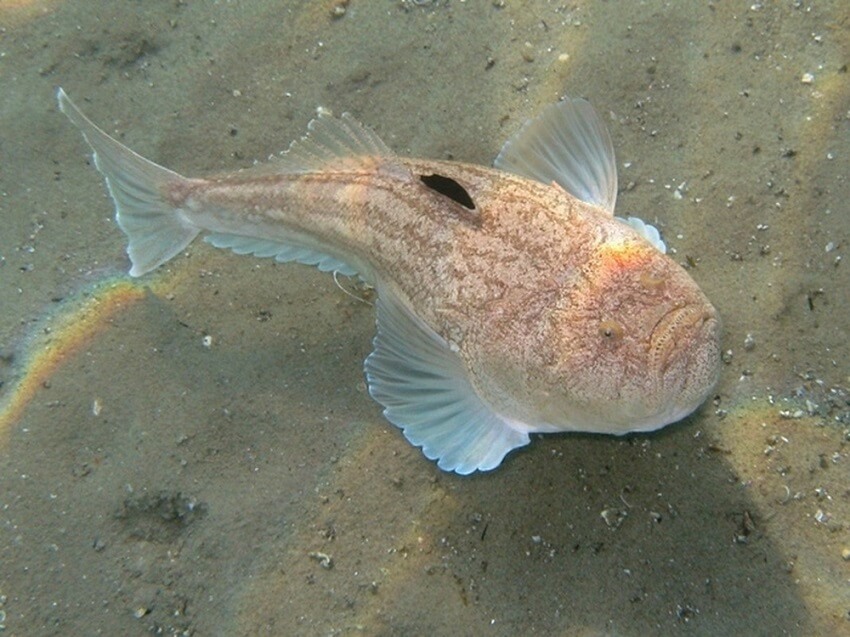
1.4. Armored Catfish
Belonging to the family Phreatobius, the Armored Catfish is a rare and mysterious animal. They are the only fish that don’t live in water but instead slither on moist piles of leaves along streambanks. Their skin is pink and slimy. Since armored catfish live mostly underground, their eyes are nearly blind.
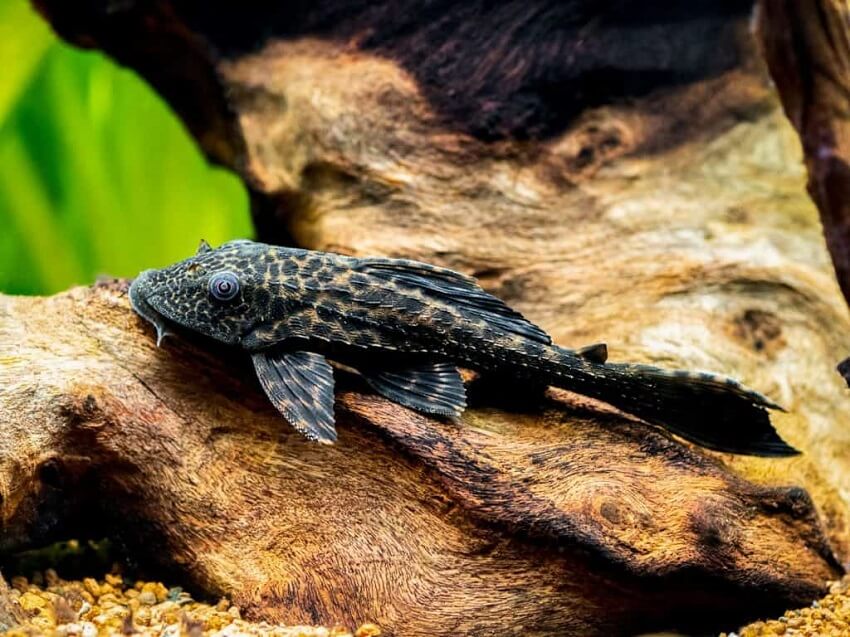
1.5. Flounder
The title of “strangest vertebrate in the world” belongs to the Flounder. When they are born, they are relatively normal. However, during growth, the flounder’s skull gradually deforms. Eventually, both of its eyes are on the same side of its body. This structural feature allows the fish to lie flat, camouflaging itself as a carnivorous mat.
The flounder’s pectoral fins gradually shrink over time. Most have an elongated mouth or snout that wraps around the front of the jaw, making their mouth look like a toothed hole that allows them to catch prey from both sides of their body at the same time.
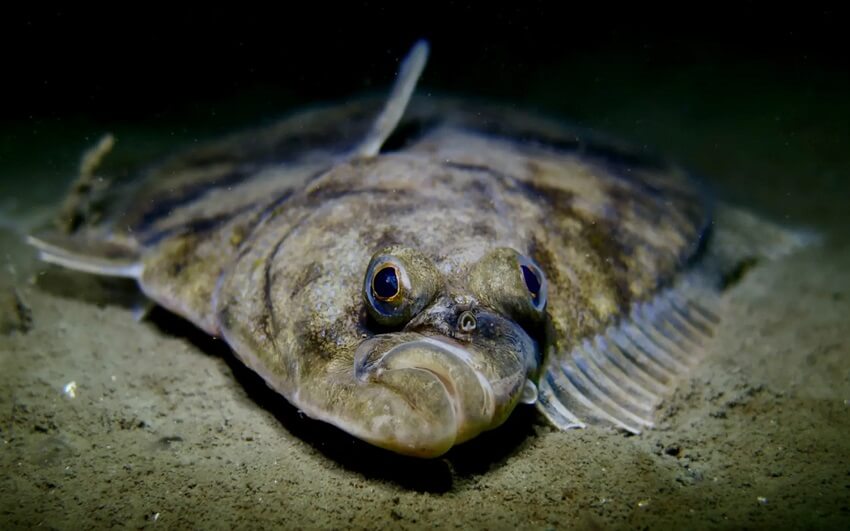
1.6. Ocean Sunfish
The Ocean Sunfish, scientifically named Mola Mola, is a large marine fish that typically dives into deep waters where temperatures are very low.
This fish has a rather strange shape. Its body is oval and round at the front and flattened toward the tail. Its body length can reach 3.5-5.5m (11.5-18 ft). Notably, the mouth of this fish is very small, and each jaw has two fused teeth that form a beak. With such a peculiar mouth, they cannot swallow large prey and feed only on small crustaceans and other plankton.
A mother sunfish can lay up to 300 million eggs after only a three-week gestation period. The hatchlings are barely larger than a grain of sand, about 600 times smaller than the mother’s body. However, the young fish grow very quickly; just 15 months after hatching, they can weigh up to 373 kg (822 lbs).
When they are young, sunfish swim very well in schools, just like other fish. As they get older, they become lazier, living alone and drifting with the ocean currents to travel across the seas.
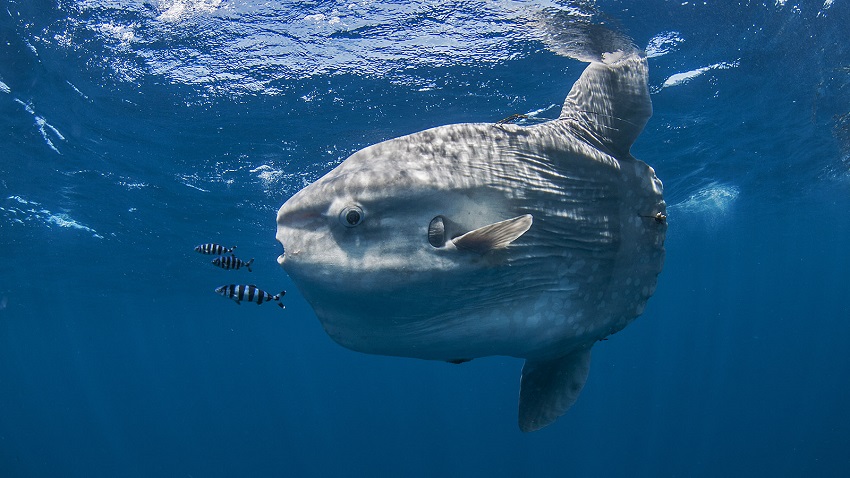
1.7. Wobbegong Shark
This species lives in coastal coral reefs off northern Australia, New Guinea, and neighboring islands and is known as one of the “strangest” sharks on the planet.
The Wobbegong has a rather large, flattened body, a mottled skin color, and beard-like projections around its mouth. Because of this, it is also called the carpet shark.
The Wobbegong shark has earned the title of “master of disguise” on the ocean floor. By using its mottled skin and beard-like growths that resemble seaweed, it mimics a coral reef, hiding itself in the sand at the bottom of the sea.
This shark’s special skill is lying still under the sand. When an unsuspecting prey gets close enough, it strikes in a flash by opening its mouth extremely wide and then quickly snapping it shut, giving the prey no chance to escape.
Currently, the Wobbegong shark is classified as a near-threatened species.
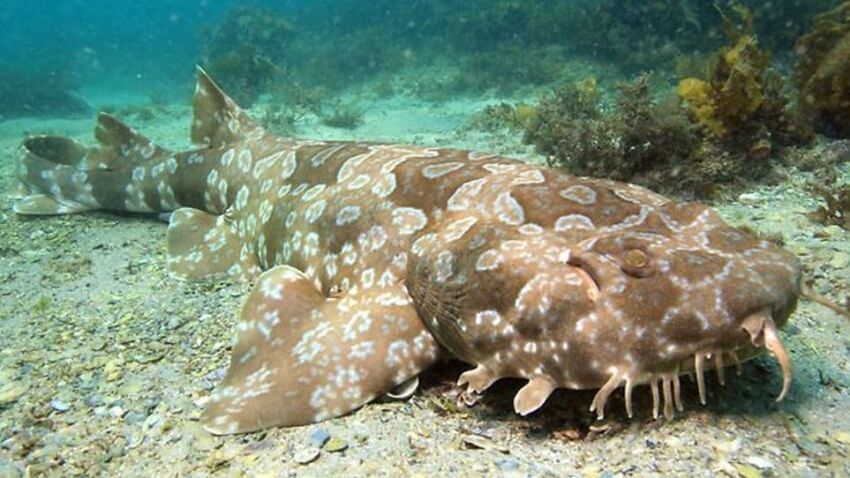
1.8. Anglerfish
This fish belongs to the bony fish family Lophiiformes and lives in the deep waters of the Atlantic and Pacific Oceans.
The Anglerfish has a bizarre body with an “oversized” head. Its upper jaw is unusually large and can fold down to completely enclose the lower jaw. It’s also known for the natural “fishing rod” on top of its head.
The anglerfish’s “fishing rod” lures prey directly into its mouth. With a jaw and stomach that can expand, the anglerfish can swallow prey up to twice its own body size.
The anglerfish’s grotesque appearance is an advantage, helping it to hide and wait for prey to fall into its mouth. With its “superb” hunting ability, this fish is also known as the “monster” of the deep sea.
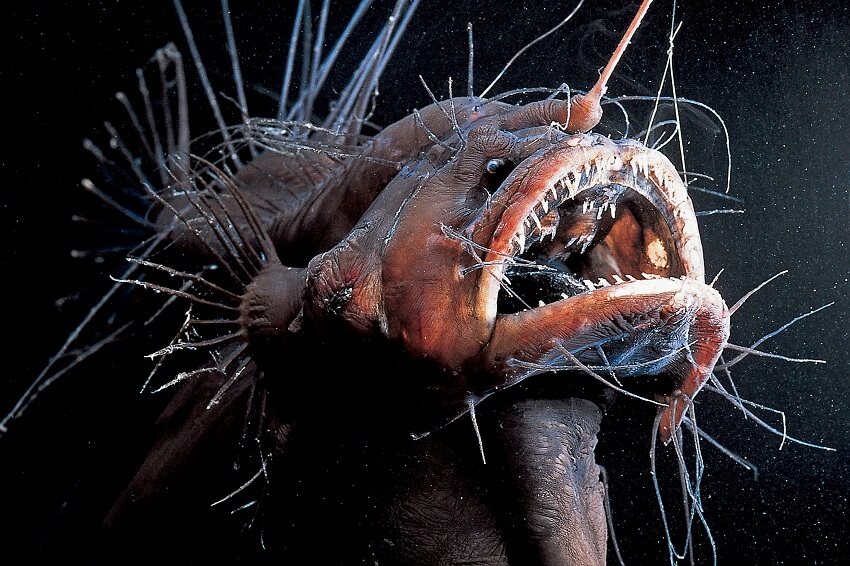
1.9. Red-Lipped Batfish
The Red-Lipped Batfish’s scientific name is Ogcocephalus darwini. They are found in deep waters around the Galapagos Islands in the Pacific Ocean and off the coast of Peru.
As the name suggests, the Red-Lipped Batfish has peculiar red lips, a flat, compressed body, and wide fins that resemble bat wings. Their red lips may be used to attract a mate or to camouflage them while hunting.
When it reaches adulthood, the fin on the Red-Lipped Batfish’s back will develop into a finger-like growth on top of its head. According to scientists, the fish uses this fin to lure and “trap” its prey. Its diet consists of fish, shrimp, crustaceans, and other small creatures.
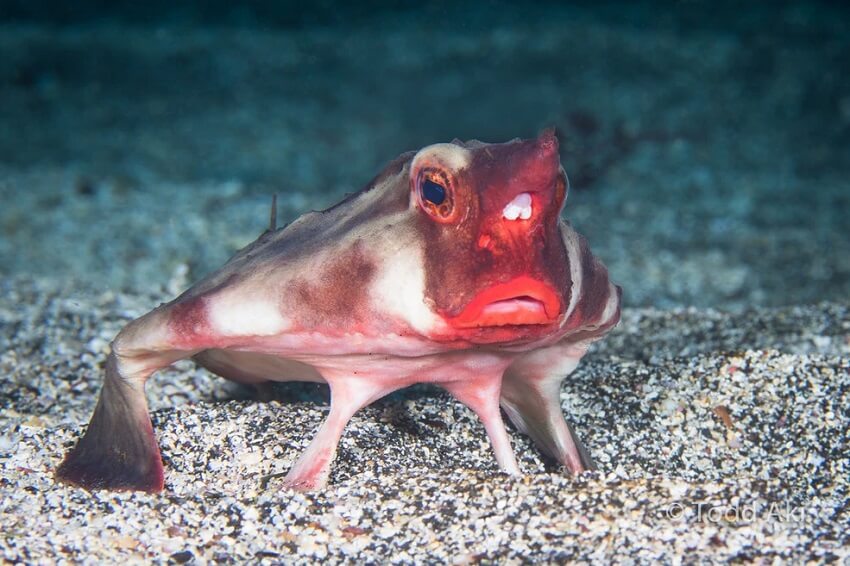
1.10. Blobfish
The Blobfish, scientifically named Psychrolutes marcidus, is a deep-sea fish that lives in temperate waters. Its habitat is in the deep sea off the coasts of Australia (Broken Bay), New South Wales, and Tasmania, as well as in some deep waters off New Zealand.
Often compared in appearance to the character Jabba the Hutt from Star Wars, this fish has a truly ugly appearance. The Blobfish has milky white or pinkish skin. When viewed horizontally, it looks like a chubby man’s face with a grumpy expression and an onion-shaped nose.
This fish’s body is made of gelatinous masses with a density lighter than water, which allows it to float effortlessly above the seabed and withstand immense pressure. The Blobfish is very “lazy” when it comes to movement. It floats in the water, waiting for prey to pass by before swallowing it whole.
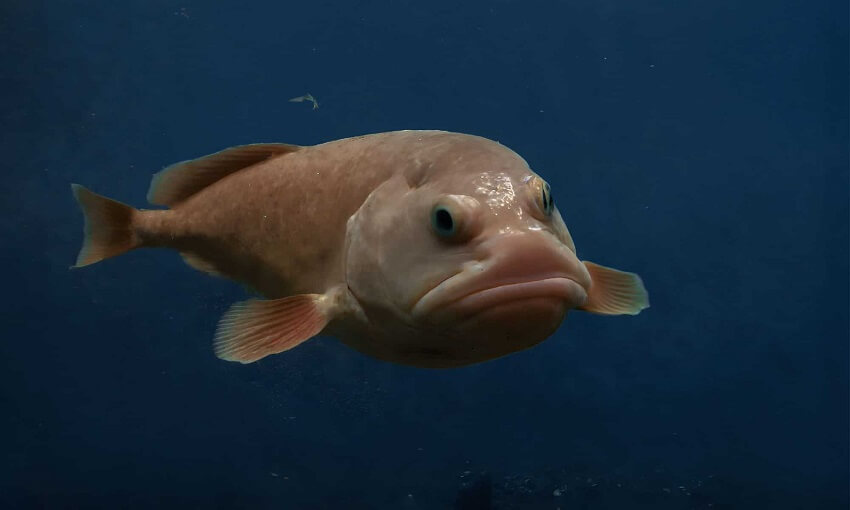
1.11. Goblin Shark
The Goblin Shark is also considered one of the strangest fish on the planet.
They are seen as prehistoric monsters, the last remaining member of the family Mitsukurinidae, which dates back more than 125 million years.
As a deep-sea shark, the Goblin Shark has an extremely ugly and frightening appearance with a long, beak-like snout. Furthermore, the Goblin Shark has a pinkish body and a set of razor-sharp teeth that can crush any food.
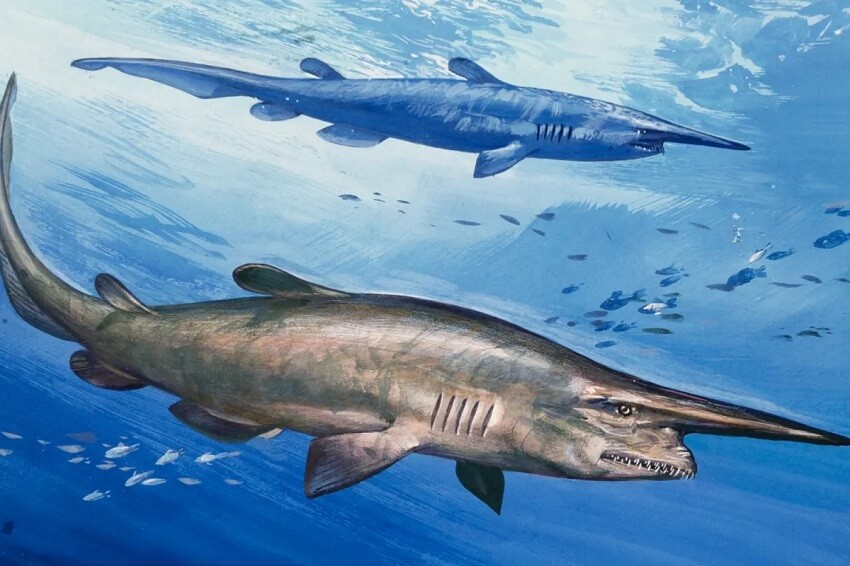
2. FAQs
1. What is special about the “waterfall-climbing fish”?
Cryptotora thamicola (the waterfall-climbing cavefish) is a cavefish from Thailand with the unique ability to climb waterfalls. It uses its four fins to cling to wet rocks and can even scale vertical waterfall faces.
2. What makes the “tripod fish” stand out?
The tripod fish is a motionless species that uses its three long, slender fins to stand still on the deep seabed like a coral. It waits for plankton to drift by and then uses its two front fins to catch its prey.
3. How does the “stargazer fish” catch its prey?
The stargazer fish has upward-facing eyes and sharp teeth, and it camouflages itself under sand or mud to ambush prey. When an opportunity arises, it launches itself like a “killing pit” to swallow prey whole.
4. Which species is known as “the oddest vertebrate” due to its skull evolution?
The flounder stands out due to its deformed skull, its eyes migrate to one side of its head, allowing it to lie still on the seabed like a carnivorous mat.
5. Why is the goblin shark considered extremely strange?
The goblin shark has a long beak, like snout, a pink body, and sharp teeth. It is the last remaining member of the Mitsukurinidae family, which has existed for over 125 million years.
3. Conclusion
The world of the deep sea is truly bizarre, with creatures that have extraordinary shapes and abilities,from the mountain, climbing cavefish and the three-legged deep-sea fish to the prehistoric-looking goblin shark. The Strangest Fish in the World not only astound us but also demonstrate the creatively diverse evolution found in nature. We hope that after this exploration, you’ll have a newfound love and appreciation for the mysterious beauty of the ocean.


